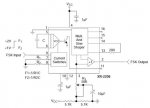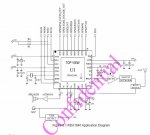Green Key Wizard enters the room:
First let's bust a myth: There were once telegraphists that could read rtty off the air, probably at 45 or 50 baud..
Like cockroaches in beehive hairdoos, everyone knows someone who knows someone that can do it. As a telegraphist I never heard that claim, only many years later from radio amateurs. Provide a name. As I explained elsewhere recently, it is easy to recognise an RYRYRY sequence of reversals on a calling tape, but to read just two groups of five letters at 50 baud from a tape transmitter (machine speed) would be a convincing start. 66.6wpm. To put it into perspective take the characters A B C D E F in Morse, transmit them at 50wpm and see how accurate your result is. I used to check TAFORS that I had typed up and with the copy in front of me used to run the perforated Morse tape at 50wpm to check it. I could pick up an error, but had to turn the Wheatstone transmitter down to 30wpm to be able to reliably catch the character.
I have to add that my sweet spot was (not is) in the 16wpm to 20wpm range. Why did I check the tape at 50wpm, simple, so that I could get back to reading my book. Checking at the 18wpm speed for Allied broadcasts would have taken up all the time between broadcasts.

= = =
Back on thread.
Known as a 5 unit code, the format was invariably 1 start bit, 5 data and 1.5 stop bits. 45.45 baud was popular amongst radio amateurs, but Military and GPO teleprinters ran at 50 baud, giving a rate of 66.6wpm or 10 characters per second. 75 baud gave 100wpm.
In Amateur use the standard shift for many years was 850Hz using tones 2125Hz and 2975Hz. This later became known as Wide Shift and the Narrow Shift at 170Hz became popular using tones 2125Hz and 2295Hz. This quickly became a standard, but was only possible as the frequency stability and tuning accuracy of transmitters and receivers improved over the years, even before frequency synthesisers became popular or common. For many years the ubiquitous 88mH telephone loading torroids were the prized heart of many a tuning unit. As supplies eventually dried up the semiconductor industry was beginning to produce some very interesting devices which came to the rescue and brought about some radical new designs initially using 741 op amps before the clever stuff arrived. A lot was done to remove phase discontinuity errors in AFSK tone generators.
Military transmitters invariably used USB and did not observe the 10MHz convention with regard to SSB transmissions. Changing from USB to LSB would of course invert the two tones. On ship shore RATT (Radio Automatic TeleType) circuits, it was common to hammer away rythmically on the letter shift whilst thinking between typing to keep up the signal to noise margin. Random bursts of typing would otherwise become lost as the receiver AGC attacked and took time to settle at the onset of a transmission.
You became very good at reading a bit of terxt received in the wrong case in such cases. The Baudot code (Emile Baudot) was improved upon by Murray and the Murray Code was later adopted at the ITA2 international alphabet. The term Baudot code tends to be used by Americans and in Amateur Radio circles. GPO telegraph engineers were easily recognised by their pronunciation of the phrase "baud speed" Baud as in Loud, whereas mere mortals invariably said Baud as in Lord.
Standard convention was Mark high, both logic and frequency/tone being high for the marking/idle line condition. On line communications used to begin VZCZC. The V being a wake up character to allow mechanical systems to get up to speed and the ZCZC was a reversal code which was probably used by automatic systems to verify the start of a transmission and synchronise.
Ir should be very possible to produce an acceptable AFSK oscillator using the PICAXE sound command. And conversion from ASCII to ITA2 coding should be relatively easy, given that a relatively limited character set is involved and case control characters (figs and letters) generated as needed.
The link
http://www.kloth.net/services/ttypunch.php gives most of the practical information required.. Note the picture of the tape runs in with letter shifts (standard) uses ZCZC as I have mentioned (notice the complimentary data pattern), includes RYRY sequence (note the complimentary data pattern).
At the end of the tape the sequence is CR CR LF LF LF LF NNNN. The Alignment Function is CR CR LF (infers a military trained operator (?))
The reason for 2 CR LF was that it took a while for the platen to move back to the begining of the line. If only CR LF was used then one character was likely to be printed during the return journey of the platen. LF CR would of course print the first character of the new line rather late in the line and the second character could also become a casualty.
@Hippy, so now you know why I'm so anal about serial comms.
@Manuka, standard fare I guess! I bet you had the t-shirt back in the day.




